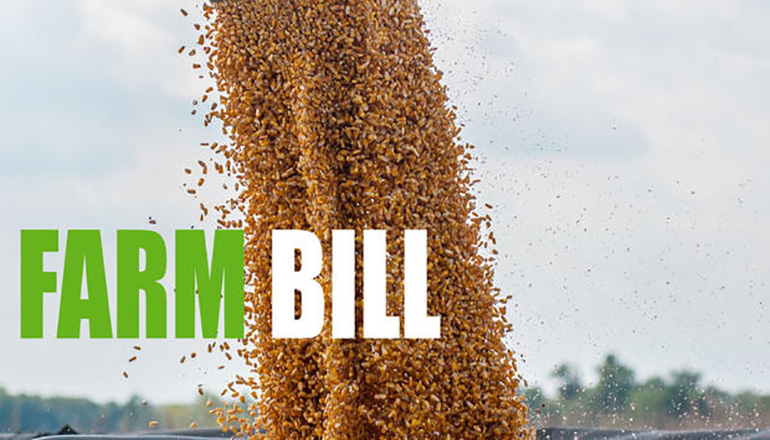(Missouri Independent) – Members of the U.S. House Agriculture Committee are considering how to help farmers struggling with rising costs for fertilizer, fuel, seeds, and chemicals — the unfortunate harvest of the war in Ukraine strains the global supply system, inflation, and severe weather.
A panel of the committee heard from agricultural economists Thursday, as lawmakers debate how to structure the federal safety net in the next farm bill, due when current programs expire in 2023.
The debate comes as traditional corn, soy, and wheat farmers straddle both sides of inflation and the economic effects from the war in Ukraine. They’re seeing both huge increases in prices for their crops and soaring costs for everything they have to purchase to plant them.
“Since 2018, when the last farm bill was written, farmers have experienced the economic impacts of a trade war with China, marketing and supply chain disruptions caused by the pandemic, historic weather events, and now extreme volatility in commodity and input markets,” said Rep. Cheri Bustos, an Illinois Democrat and the chairwoman of the subcommittee that oversees farm commodities.
“This all has implications for the next farm bill,” Bustos added.
Rep. Glenn Thompson, a Pennsylvania Republican, said he wants to pay special consideration to the margins for farmers as members work on the next farm bill. Thompson is the top Republican on the Agriculture Committee and could helm the farm bill process if Republicans take control of the House.
“The bottom line is that agriculture is a business, and at the end of the day, it is not what you bring in but the margin you are left with,” said Thompson. “I have tremendous concerns with where we are headed right now.”
Holes in the safety net
The farm bill includes long-standing safety net programs that offer some risk protection and financial support to American farmers.
That includes crop insurance and farm commodity programs, which pay farmers if crop prices drop. But the programs don’t account for the current challenge for farmers of rising costs for fuel, fertilizer, pesticides, and seeds.
Economists suggested lawmakers consider pilot programs geared to aid farmers struggling in those margins.
“Input costs are increasing and with inflation, you’re going to have intense pressure where that safety net will be weakened,” said Ronald Rainey, director of the University of Arkansas System Division of Agriculture.
The big commodity crops, especially corn and wheat, are seeing high prices — due in part to the disruption of a global market that usually has Ukraine and Russia as important players.
Anticipated prices for the 2022 U.S. wheat crop are 50 percent higher than they were in January, according to Joseph Janzen, an agricultural economist at the University of Illinois Urbana-Champaign.
Futures prices for corn and soybean prices are also on the rise: 30 percent for corn and 20 percent higher for soybeans.
But agricultural economists told lawmakers that the sky-high prices may give a false impression since farmers are also paying more than ever for fertilizer and fuel. The benchmark prices of crude oil and U.S. fertilizer prices approximately tripled between January 2021 and March 2022.
Russia and Belarus are also major fertilizer producers and exporters. Those input prices are expected to stay high for the next few years.
“What we know is going to happen, is prices are going to decline but input prices are going to stay up for a while, they always do. And that is going to leave people in a cost-price squeeze,” said Joe Outlaw, co-director of the Agricultural and Food Policy Center at Texas A&M University.
The high fertilizer and energy prices have both short and long-term effects on agriculture. If farmers respond by planting less and using less fertilizer, they will have a smaller harvest — bringing in less income for their farms and potentially exacerbating rising food costs.
Farm bill process
Every five years lawmakers have to reauthorize the farm bill — a laborious process to re-examine the policy and funding structure for federal agriculture and food assistance programs.
The farm bill is unique in that it provides “mandatory” funding for many of the programs it authorizes, so the programs do not have to go through the congressional appropriations process every year. As such, farm bill authorization is a complex and contentious process, as lawmakers debate how and where to spend more money.
Most lawmakers at the subcommittee hearing Thursday did not call for a major overhaul of the longstanding safety net for farm commodities.
“Our main approach to writing a new farm bill should be a cautious one,” said Rep. Rick Allen, a Georgia Republican, noting how chaotic the past few years have been for agriculture and the economy. “We should not make major changes unless we are able to fully evaluate the consequences of those changes.”
But some said they should consider more flexibility and innovation in farm programs to try to address mounting challenges from drought, severe weather, and climate change. For instance, more than half of Arizona is in severe drought and an additional 10 percent is enduring extreme drought.
“I have never seen conditions like this with no relief in sight. We have something that has to be overcome, and we can’t do it by half measures,” said Rep. Tom O’ Halleran, an Arizona Democrat.
In addition to the commodity programs, the farm bill includes crop insurance, conservation programs, and food assistance programs. The bulk of farm bill spending goes to food programs, like the supplemental nutrition assistance program (SNAP, formerly known as food stamps) for low-income individuals and families.


